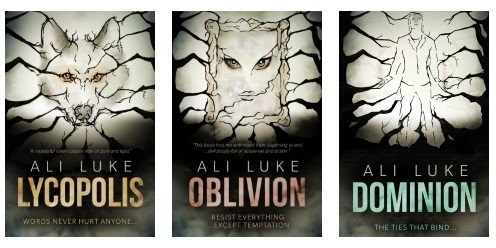What is Subtext in Fiction – and How Can You Use it in Your Writing?

Subtext is what’s unspoken or implied. It’s what lies beneath the surface-level meaning of what someone says or does.
We’re all familiar with subtext in everyday life.
Let’s say a family member asks, “Have you lost weight?” There could be all kinds of subtext: perhaps their real meaning is “I think you should lose weight” or “You’re looking tired and unwell” or even “I’m obsessed with weight and diet culture and I see this as a generic compliment.”
Or how about if a friend says “I suppose you’ll be busy this weekend?” They might simply be making conversation. Or they might be passively-aggressively implying you’re too busy to hang out with them. They may even want an opening to talk about their exciting weekend plans.
What is Subtext in Fiction?
In fiction, subtext is what lies beneath the surface of the text. This is common with dialogue … but it can also be the case with narrative (particularly in a first-person or epistolary novel). As readers, we don’t simply take the words at face value. We look for what might be implied or what meaning might be hidden beneath them.
Why Use Subtext?
Subtext makes your story stronger and more interesting. It can even give the reader a puzzle to work out, or get us to carry on turning the pages because it raises an unanswered question.
With dialogue, subtext makes for more realistic conversations between characters. After all, most of us don’t come out and outright say certain things in real life … especially in emotionally fraught situations. What K.M. Weiland calls on-the-nose dialogue tends to come across as a bit amateur.
Three Examples of How Authors Use Subtext in Fiction
The best way to get the hang of subtext is to take a look at some examples of authors doing it well, both in dialogue and in narrative.
Example #1: Hills Like White Elephants (Ernest Hemingway)
If you’ve not already read Hills Like White Elephants, it’s a very quick read. Pause and read it before you get to the spoilers after this excerpt.
The girl was looking off at the line of hills. They were white in the sun and the country was brown and dry.
“They look like white elephants,” she said.
“I’ve never seen one,” the man drank his beer.
“No, you wouldn’t have.”
“I might have,” the man said. “Just because you say I wouldn’t have doesn’t prove anything.”
The girl looked at the bead curtain. “They’ve painted something on it,” she said. “What does it say?”
“Anis del Toro. It’s a drink.”
This passage of dialogue comes very early in the story. Even at this point, it’s clear the girl (later called “Jig” in dialogue) and the man (never named) aren’t quite getting along. Their dialogue doesn’t quite become an argument – the girl changes the subject once it seems like they’re about to argue – but there’s a simmering subtext here. We get the sense that something’s wrong between the couple.
As the story progresses, despite how pared-back it is, we begin to realise from the conversation what the problem is: the girl is pregnant, and the man wants her to have an abortion. At no point in the story does anyone say the word “abortion”, but we know that’s what they’re talking about.
And while the man constantly says things like “if you don’t want to you don’t have to” and “I don’t want you to do anything that you don’t want to do”, the subtext is very clear to the reader, and to the girl. He does want her to have an abortion, and he wants her to feel like it’s her choice.
Example #2: The Lottery, by Shirley Jackson
Again, if you’ve not read The Lottery, I’d suggest doing so before reading on: the true nature of the titular Lottery only becomes clear towards the end.
Mr. Summers consulted his list. “Clyde Dunbar,” he said. “That’s right. He’s broke his leg, hasn’t he? Who’s drawing for him?”
“Me, I guess,” a woman said, and Mr. Summers turned to look at her. “Wife draws for her husband,” Mr. Summers said. “Don’t you have a grown boy to do it for you, Janey?” Although Mr. Summers and everyone else in the village knew the answer perfectly well, it was the business of the official of the lottery to ask such questions formally. Mr. Summers waited with an expression of polite interest while Mrs. Dunbar answered.
“Horace’s not but sixteen yet,” Mrs. Dunbar said regretfully. “Guess I gotta fill in for the old man this year.”
The rather bureaucratic details involved in the administration of the lottery could be dull … but there’s a subtext here that we glean from the dialogue: something is unusual or undesirable about this lottery. We also pick up, without being told, that the lottery is run in this deliberately formal way, detached from everyday life.
As the story progresses, there’s a growing undercurrent of unease. This turns from subtext into actual text when Tessie Hutchinson protests:
Then the voices began to say, “It’s Hutchinson. It’s Bill,” “Bill Hutchinson’s got it.”
“Go tell your father,” Mrs. Dunbar said to her older son.
People began to look around to see the Hutchinsons. Bill Hutchinson was standing quiet, staring down at the paper in his hand. Suddenly, Tessie Hutchinson shouted to Mr. Summers, “You didn’t give him time enough to take any paper he wanted. I saw you. It wasn’t fair!”
“Be a good sport, Tessie,” Mrs. Delacroix called, and Mrs. Graves said, “All of us took the same chance.”
The reader still doesn’t know exactly what’s happening, but it’s increasingly clear that no one wants to win this strange lottery.
Example #3: The Therapist, B.A. Paris
Subtext isn’t exclusive to dialogue. In a first-person narrative, you can start to create subtext through the voice of your character, through what they observe and think.
My office is small, perfect and minimalist. It’s decorated in calming shades of grey, with just two chairs; a cocoon-style grey one for my clients and a pale leather one for me. …
Through the slatted blind shading the window of my office, I can see anyone who comes to my door. I’m waiting for my new client to arrive, hoping she’ll be punctual. If she’s late – well, that will be a black mark against her.
She arrives two minutes late, which I can forgive. … Which is unnecessary, because there is no plaque on the wall advertising my services.
Nothing sinister has happened, but already we feel a sense of unease. The detail of the windowless room, the controlling sense of timekeeping, and the narrator observing her client create an unsettling subtext.
How to Write Subtext Effectively in Your Novel or Short Story
Adding subtext might feel tricky … and how much to include depends on your genre and style.
Different Layers of Meaning
Subtext can be obvious on one level:
Josie was unstacking the dishwasher when Ben appeared downstairs. “I’m glad someone got a lie in. The kids have been up for hours.”
The subtext: she’s not glad at all—she’s annoyed. But perhaps she’s also hinting that she wants a lie in tomorrow. Or maybe she’s annoyed Ben hasn’t done his usual chores.
Dramatic Tension
When characters don’t say what they mean, tension builds. Maybe one character is oblivious—or pretending to be. As readers, we’re waiting for the truth to come out.
This kind of tension works in screenwriting too. For instance, in Heretic, Mr Reed appears friendly … but we feel a sinister undercurrent from the start.
Subtext in Dialogue vs Narrative
In dialogue, subtext works in any genre. Characters say things they don’t quite mean. They avoid topics or mask their real emotions.
In narrative, subtext can appear through gestures, silence, body language, or even how something is described from a character’s viewpoint.
Don’t worry if it’s hard to get right in a first draft. You can always refine it later—tightening your dialogue, cutting obvious lines, and layering in subtle meaning.
For more help with adding subtext, try these posts:
About

I’m Ali Luke, and I live in Leeds in the UK with my husband and two children.
Aliventures is where I help you master the art, craft and business of writing.
Start Here
If you're new, welcome! These posts are good ones to start with:
Can You Call Yourself a “Writer” if You’re Not Currently Writing?
The Three Stages of Editing (and Nine Handy Do-it-Yourself Tips)
My Novels

My contemporary fantasy trilogy is available from Amazon. The books follow on from one another, so read Lycopolis first.
You can buy them all from Amazon, or read them FREE in Kindle Unlimited.

A clear and insightful guide that brilliantly unpacks subtext and shows how to use it to deepen tension and meaning in fiction writing!